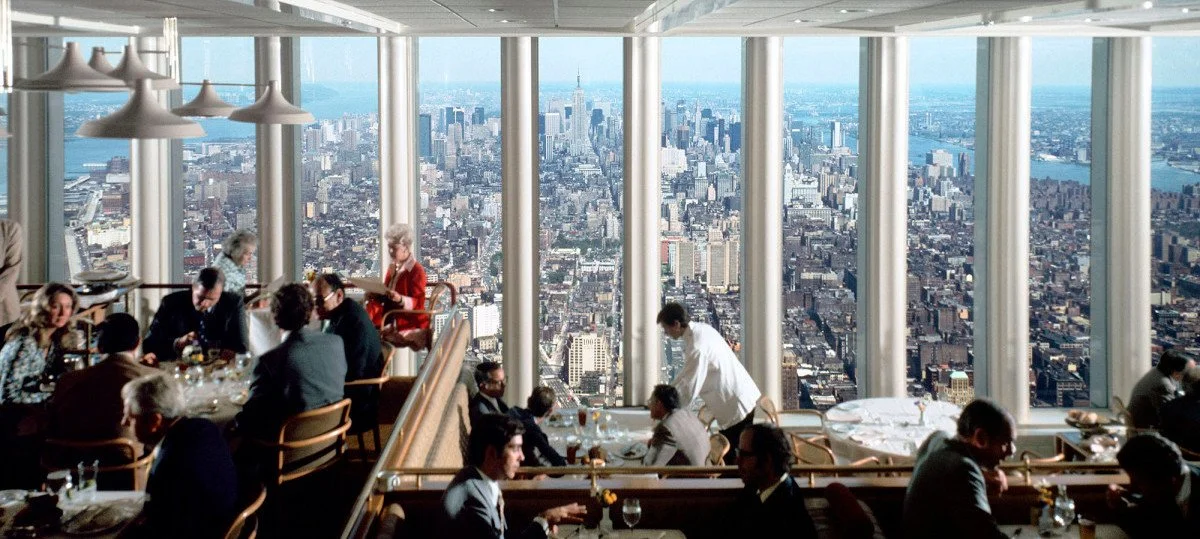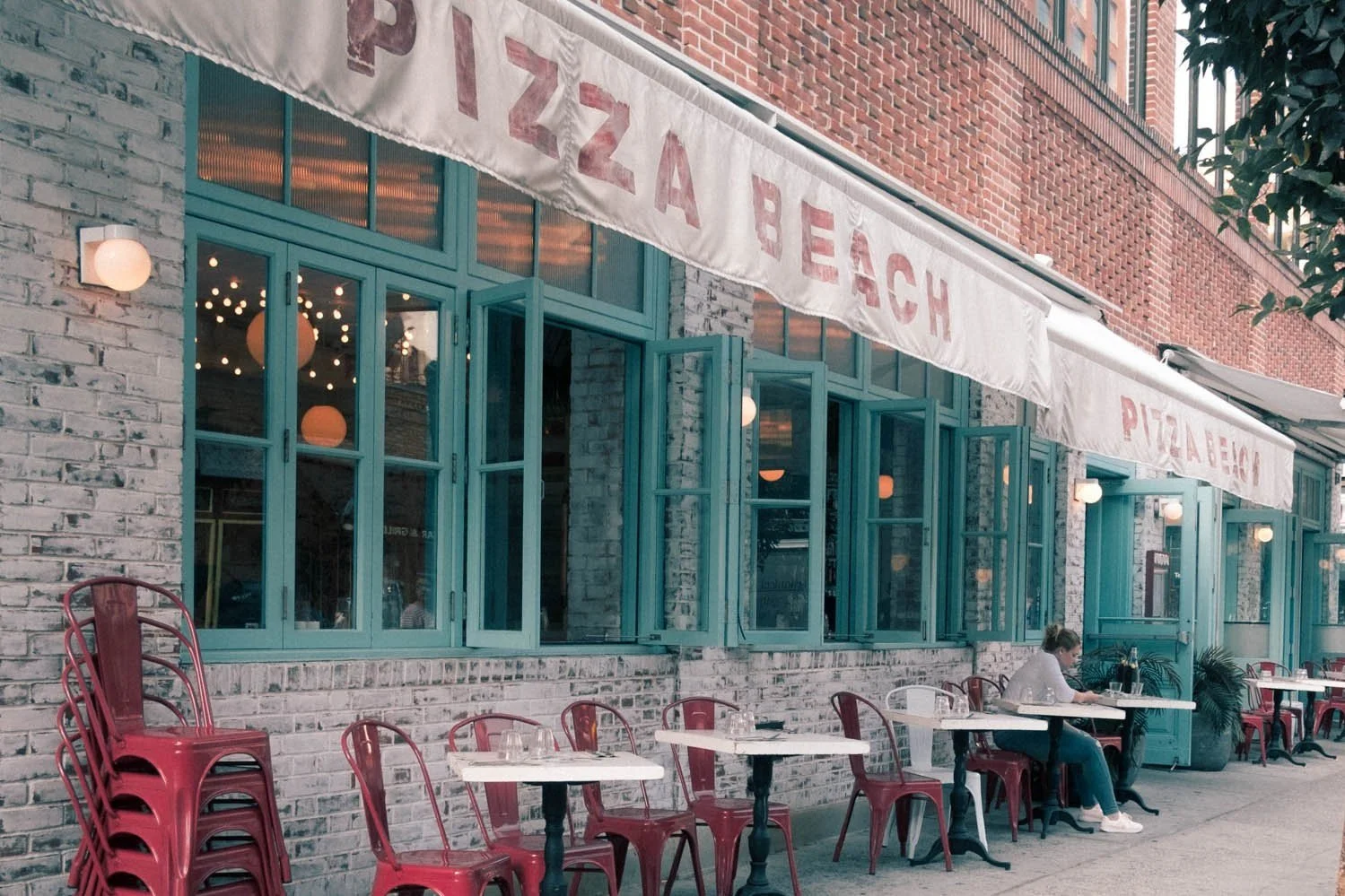The Best Restaurants In NYC That Don’t Exist Anymore
Source: Squarespace/Unsplash
The Rise And Fall Of Restaurants In NYC
In the ever-evolving culinary landscape of New York City, restaurants experience a dynamic cycle of rise and fall over time. The city's diverse and discerning population, coupled with its reputation as a global gastronomic hub, fosters a competitive environment where establishments strive for innovation and excellence. Newcomers often rise to prominence by introducing novel concepts, unique culinary experiences, or a fusion of global influences. However, the constant pursuit of culinary innovation, changing consumer preferences, and economic fluctuations contribute to the natural ebb and flow of the restaurant scene.
While some restaurants achieve enduring success and become culinary institutions, others may face the challenges of a fiercely competitive market and evolving trends, leading to closures or reinventions. This cyclical nature reflects the city's gastronomic evolution, where the rise and fall of restaurants contribute to the dynamic and ever-changing tapestry of New York City's culinary identity.
New York City, a gastronomic haven that boasts a culinary scene as diverse as its residents, has been home to some iconic restaurants that have left an indelible mark on the city's dining landscape. In this article, we take a nostalgic journey to remember and pay homage to the best restaurants in NYC that, for various reasons, have closed their doors. Each of these establishments, once celebrated for its unique ambiance and culinary excellence, holds a special place in the hearts of food enthusiasts and locals alike.
Source: One World Trade Center
1. Windows On The World: Closed September 11th, 2001
Windows on the World was an iconic restaurant located atop the North Tower of the World Trade Center in Lower Manhattan, New York City. Opened in 1976, it quickly became a symbol of fine dining and sophistication, offering breathtaking panoramic views of the cityscape. Positioned on the 107th floor, the restaurant provided an unparalleled vantage point, allowing diners to experience the city from a height of over 1,300 feet.
The interior design of Windows on the World was elegant and modern, with floor-to-ceiling windows that framed the expansive views of the New York City skyline, the Hudson River, and beyond. The restaurant served a diverse menu that featured contemporary American cuisine prepared with finesse by renowned chefs. Beyond its culinary offerings, Windows on the World became a cultural and social hub, hosting events, weddings, and corporate gatherings in its versatile event spaces.
Tragically, Windows on the World faced its untimely demise on September 11, 2001, during the terrorist attacks that targeted the World Trade Center. The loss of this iconic establishment was not only a blow to the culinary scene but also a poignant symbol of the broader tragedy that befell the city. Despite its closure, the memory of Windows on the World lives on as a testament to the resilience of New York and the indomitable spirit of a city that continues to rebuild and remember.
Source: Wikimedia Commons, Jim Henderson/ CC BY
2. Mars 2112: January 31st 2012
Despite its once-iconic status and unique dining experience, Mars 2112 in NYC eventually faced the harsh reality of the restaurant industry. Despite its initial popularity, the restaurant struggled to maintain consistent foot traffic and profitability over the years. Rising operational costs, changing consumer preferences, and increased competition in the vibrant New York City dining scene all contributed to its decline.
Despite efforts to revitalize the brand and attract new customers, including menu updates and marketing campaigns, Mars 2112 ultimately faced insurmountable challenges. As a result, the restaurant made the difficult decision to close its doors for good.
The closure of Mars 2112 marked the end of an era for many who had fond memories of dining in its otherworldly atmosphere. The once-thriving space-themed restaurant now stands as a relic of a bygone era, a reminder of the fleeting nature of culinary trends and the importance of adaptability in the ever-changing hospitality industry.
While its closure may have left a void in the hearts of loyal patrons and fans, the legacy of Mars 2112 lives on in the memories of those who experienced its extraterrestrial charm. As one of New York City's most unique dining destinations, Mars 2112 will always hold a special place in the city's culinary history, even as it fades into the annals of time.
Source: Wikipedia Commons, Geslin George/ CC BY
3. The Four Seasons: Closed June 11, 2019
Situated within the iconic Seagram Building, The Four Seasons stands as a trailblazer that redefined the concept of the "power lunch."
For well over half a century, this Midtown institution played a pivotal role as a gathering place for influential business magnates, celebrities, and the city's elite. The restaurant, characterized by its innovative seasonal menus and modernist design by the renowned architect Philip Johnson, was not merely a culinary haven but a bona fide architectural landmark. The Four Seasons seamlessly blended gastronomic excellence with cutting-edge design, becoming a symbol of sophistication in upscale dining.
One of the main attractions that drew in crowds at The Four Seaons was its pool. The pool at The Four Seasons, located in the Seagram Building in Midtown Manhattan, was an epitome of luxury and sophistication. Surrounded by sleek modernist design elements by architect Philip Johnson, the pool area seamlessly integrated elegance and relaxation.
Source: The Empire City Wire
With its shimmering waters and meticulously designed surroundings, the pool offered a serene escape from the bustling city below.
The atmosphere was one of refined indulgence, where guests could unwind in style. The pool area, much like the rest of The Four Seasons, was an integral part of the overall experience, reflecting the establishment's commitment to providing a haven of opulence in the heart of New York City.
The Dover sole was one of its signature dishes and a favorite among patrons. The dish featured fresh Dover sole fish, known for its delicate flavor and tender texture. It was typically prepared simply, often grilled or sautéed, allowing the natural flavors of the fish to shine. The Four Seasons' version of the dish likely featured high-quality ingredients and expert culinary techniques, elevating it to a gourmet experience.
Its closure marked the end of an era, leaving behind a legacy that continues to influence the landscape of American gastronomy. As we bid farewell to The Four Seasons, we acknowledge the indelible impact it had on shaping not only the culinary scene but also the very essence of a power lunch experience, forever etching its name in the annals of New York City's rich dining history.
Source: Squarespace/Unsplash
4. The 21 Club: Closed December 20th 2020
The 21 Club, a bastion of sophistication and culinary excellence that graced the New York City dining scene for nearly a century, ceased operations on December 20th, 2020, marking the end of an era. Nestled in the heart of Midtown Manhattan, this iconic establishment played host to generations of celebrities, politicians, and discerning diners who sought an unparalleled fine dining experience.
The 21 Club achieved cinematic fame when it was prominently featured in the 1987 film "Wall Street." Directed by Oliver Stone, the movie revolves around the high-stakes world of finance and corporate greed. In one memorable scene, the character Gordon Gekko, played by Michael Douglas, hosts a business meeting at The 21 Club. The restaurant's iconic jockey statues and renowned speakeasy history provide a distinctive backdrop to the power dynamics and machinations depicted in the film. The scene not only showcased The 21 Club's elegant interior but also contributed to the restaurant's cultural legacy, associating it with the opulence and influence depicted in the world of high finance as portrayed in "Wall Street." The 21 Club's appearance in the film further solidified its status as a symbol of sophistication and a favored setting for scenes depicting the high-powered dealings of New York's elite.
The restaurant's legendary speakeasy origins, tracing back to the Prohibition era, added a layer of mystique to its allure. The iconic jockey statues that lined its entrance became synonymous with The 21 Club's unique charm, providing a distinctive touch to its exterior.
Despite its unfortunate closure, The 21 Club leaves an indelible mark on the culinary history of New York City. Its legacy extends beyond the mere brick-and-mortar presence, resonating in the memories of those who indulged in its exquisite cuisine and reveled in its timeless atmosphere. The 21 Club remains not just a restaurant but an emblematic chapter in the narrative of New York's gastronomic evolution, showcasing the city's enduring commitment to culinary excellence and timeless elegance.
Source: Pizza Beach
5. Pizza Beach: Closed August 9th, 2021
Pizza Beach, a beloved Lower East Side (LES) staple renowned for its diverse array of pizzas adorned with an assortment of creative toppings, bid farewell to its loyal patrons in August of 2021. Situated in the heart of LES, Pizza Beach had become more than just a pizzeria; it was a cultural touchstone, a place where locals and visitors alike could revel in the artistry of pizza-making. The closure of Pizza Beach marked the end of an era, leaving behind a void in the LES culinary landscape. For years, the establishment had been a go-to spot for those seeking not only delectable pizzas but also a laid-back ambiance that encapsulated the spirit of the neighborhood.
While its closure brought a tinge of nostalgia and sadness, Pizza Beach's legacy lives on in the memories of those who enjoyed its mouthwatering slices, the laughter shared within its walls, and the unique flavor it added to the vibrant tapestry of LES's culinary scene. The shuttering of Pizza Beach serves as a poignant reminder of the ever-changing nature of New York City's culinary panorama, where cherished establishments come and go, yet their impact remains etched in the collective memory of the communities they served.
Conclusion
As the New York City dining landscape continues to evolve, it's essential to reflect on the culinary institutions that have shaped the city's gastronomic identity. The closures of The 21 Club, Four Seasons, The Loeb Boathouse, and Mission Chinese Food are not just the end of restaurants; they represent the closing of chapters in NYC's rich culinary history. However, the memories, flavors, and legacies they leave behind will forever linger in the collective palate of those who had the privilege of savoring their unique offerings.







